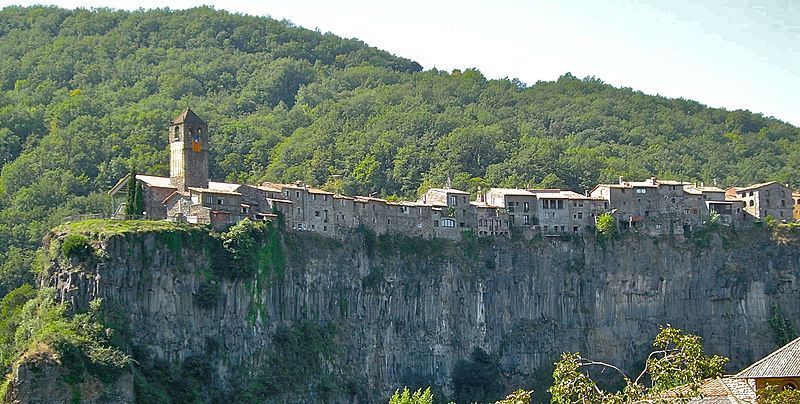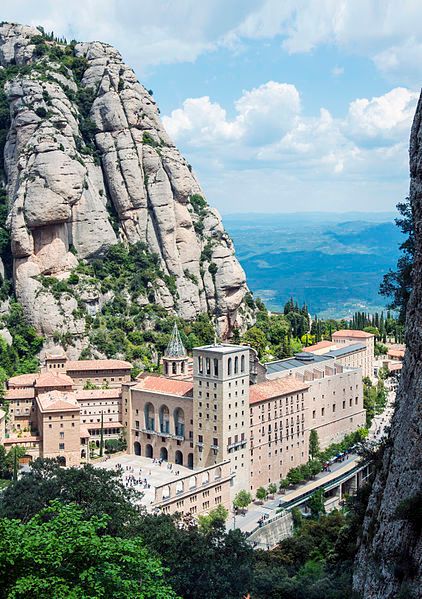Member's Evening
Twenty members attended the November evening during which Chris Simpson presented a short talk related to two geological sites of interest he had recently visited in Catalonia.
The talk was followed by a presentation to Colin Humphrey and his wife Mary as they are moving down to Hampshire. Colin has been a driving force behind the club for the last sixteen years and we wish them both all the best for the future.
Summary of talk:
Castellfollit de la Roca This is situated in Northern Catalonia about 50 – 60 miles South of the Pyrenees and is one of the eleven townships which compose the Garrotxa Volcanic Area Natural Park. Two rivers ( rivers Fluviá and Turonell) merge into one, and there is a narrow triangle of land between the two where they merge. Over a long period of time, the two rivers have eroded down, leaving the triangle of land standing out as a 50m high feature with sheer sides facing the two rivers. A medieval town was built on this land, presumably because it was so easy to defend from any attackers. The 50m high cliffs show beautifully the two lava flows with obvious columnar jointing within each flow. The lava flows have been dated, the first with a date of 217000 ± 35000 and the second at 192000 ± 25000

Montserrat is the highest mountain in a chain situated about 50miles West of Barcelona. It is 1,236m high and has a distinctive saw-toothed appearance which gives it its name. It is largely composed of conglomerates which were deposited in the Eocene era as a large fan delta. The clasts are mostly limestone and cemented with calcite. Montserrat began its formation due to the upthrusting of the Catalan Coastal Range. Denudation of this new mountain range front produced the fan delta conglomerate at its base. This sequence was about 1300m thick. During the Upper Oligocine to Lower Miocine there was an extensional phase of the Iberian peninsula causing the massif to rise, which led to the development of joints. Now the massif was also exposed to the elements leading to differential erosion and the development of a karst landscape seen today.
The Next meeting will be the AGM on Wednesday 16th January 2019. This will be followed by a short talk by member David Warren entitled: " The Geology of Anglesey."
